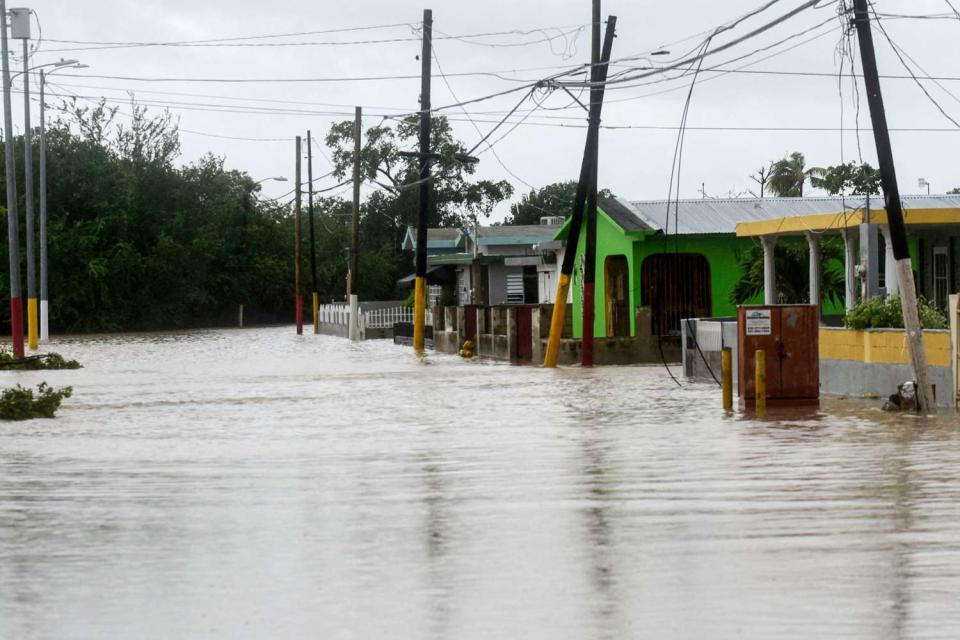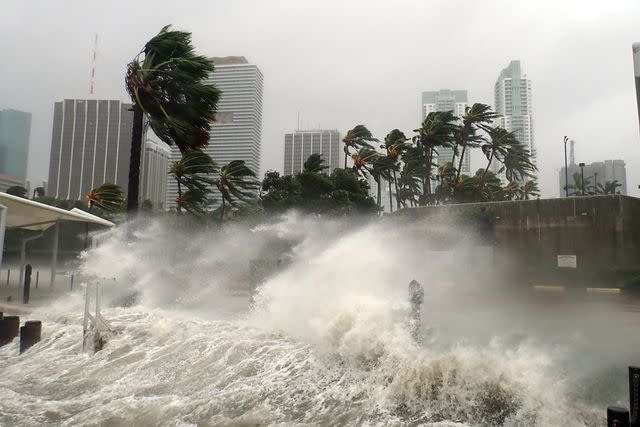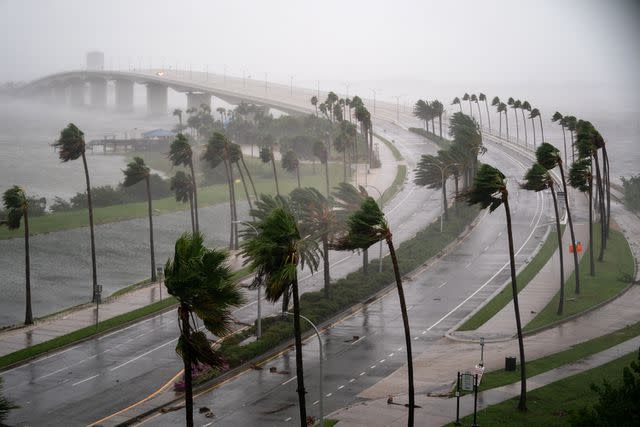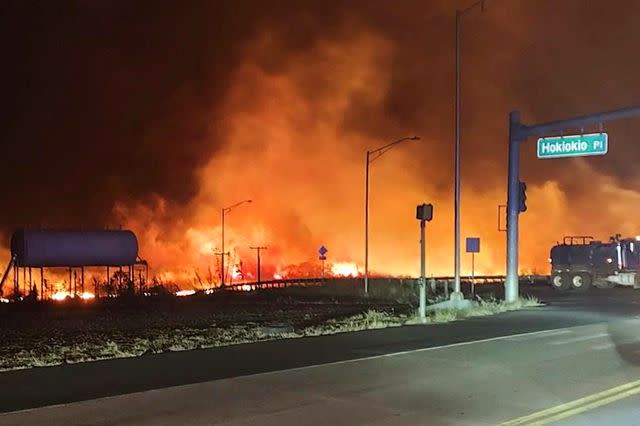Record Water Temperatures Are Increasing Chances of Intense Hurricane Season
On Thursday, the NOAA released new data suggesting that this hurricane season could see up to five major storms in the Atlantic

Jose Rodriguez/AFP/Getty
Hurricane aftermathThis hurricane season will likely be a strong one.
On Thursday, scientists at the National Oceanic and Atmospheric Administration released additional findings that the 2023 Atlantic hurricane season — which began on June 1 and ends on Nov. 30 — could be record-breaking.
Scientists at @NWSCPC have increased their prediction for the ongoing 2023 Atlantic hurricane season to an above-normal level of activity.
Forecasters have increased the likelihood of an above-normal Atlantic hurricane season to 60%.https://t.co/G5IhGIw54T pic.twitter.com/Nz2UnsNLvu— NOAA (@NOAA) August 10, 2023
Revisions to research originally published in May now suggest that there could be between 14 and 21 named storms this season. Included in the study are six to 11 tropical disturbances that could become hurricanes with winds of 74 mph or greater, and up to five that could become major hurricanes with winds ranging from 111 mph and higher.
Related: The 10 Most Disastrous Hurricanes in U.S. History
“The National Weather Service is dedicated to providing timely and accurate forecasts to empower individuals, families and communities to take proactive measures this hurricane season,” Ken Graham, director of NOAA’s National Weather Service, said of the updated information. “New tools such as a new hurricane model, the Hurricane Analysis and Forecast System and the expansion of the National Hurricane Center’s Tropical Weather Outlook to seven days are examples of our commitment to enhancing our forecasting capabilities and services.”
“The main climate factors expected to influence the 2023 Atlantic hurricane activity are the ongoing El Niño and the warm phase of the Atlantic Multi-Decadal Oscillation, including record-warm Atlantic sea surface temperatures,” Matthew Rosencrans, lead hurricane season forecaster with NOAA’s Climate Prediction Center, a division of the National Weather Service, added. “Considering those factors, the updated outlook calls for more activity, so we urge everyone to prepare now for the continuing season.”

Warren Faidley/Getty
Hurricane Irma in Miami, FloridaIn late July, water temperatures in the Florida Keys reached astounding levels. For two days in a row, climate scientists reported temps that rose above 100 degrees, the Associated Press shared. On July 23, a buoy in Manatee Bay produced a reading of 100. 2 degrees. The following day, it recorded 101. 1 degrees. Nearby buoys, such as ones in Murray Key and Johnson Key, nearly reached the triple digits as well.
Related: Texas Man Warns Hurricane Irma Victims After Getting Flesh-Eating Bacteria From Harvey Floodwaters
While talking to the news agency, Yale Climate Connections meteorologist Jeff Masters compared the water temperatures to a hot tub. That same week, Dr. Craig Crandall, a professor of internal medicine at the University of Texas Southwestern Medical Center, discussed with PEOPLE if the above-temperature waters were still okay to swim in.

Sean Rayford/Getty
Hurricane Ian in Sarasota, Florida in 2022“If someone is just sitting in a lounge chair or floating in the ocean, that’s really not going to be much of a problem,” Crandall advised. “But as they’re physically active, their muscles are generating a lot of heat and their bodies are not as effective at releasing that heat. So as their body temperature goes up, there could be a dangerous situation there.”
The high temps have also raised eyebrows for other professionals. “We didn’t expect this heating to happen so early in the year and to be so extreme,” Derek Manzello, a coordinator at the National Oceanic and Atmospheric Administration’s Coral Reef Watch, told CNN. “This appears to be unprecedented in our records.”
Never miss a story — sign up for PEOPLE's free daily newsletter to stay up-to-date on the best of what PEOPLE has to offer, from celebrity news to compelling human interest stories.
Peak Atlantic hurricane season runs from August to October, but that doesn’t mean it’s the only ocean seeing intense activity. In the Pacific, Hurricane Dora, a category 4 storm, was a major contributing factor to the catastrophic damage in Maui, Hawaii this week. On Thursday, multiple outlets, including NBC News, reported that at least 36 people died as wildfires wreaked havoc on the island.

Zeke Kalua/County of Maui via AP
Wildfires in Maui, Hawaii 2023
Jason Momoa, a native Hawaiian, uploaded a post to Instagram on Wednesday explaining that “a terrible combination of drought conditions and hurricane weather led to widespread wildfires across the Island of Maui.” While sharing resources and fundraising information to help those in need, the Game of Thrones actor, 44, added that he was “devastated and heartbroken for our friends and ‘ohana on Maui who been impacted by the recent wildfires.”
For more People news, make sure to sign up for our newsletter!
Read the original article on People.

